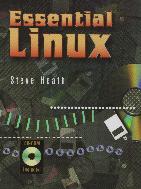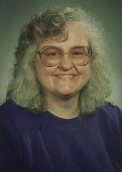

 |
 |

Essential Linux is written to give you an understanding of the basics of Linux using the Slackware v3.1 distribution. It is directed to the newcomer, the same market as Matt Welsh's Linux Installation and Getting Started and O'Reilly's Linux in a Nutshell. I think the fact that so many books directed toward the Linux user seem to be appearing on bookshelves these days is a sure sign that publishers are recognizing the growing market to be found for Linux.
The book describes author Steve Heath in this way:
``The author has been involved in the design and development of microprocessor-based systems since 1982. He is the author of 15 books in the computing field.''
As described, Mr. Heath is certainly well qualified to write a Linux book for the novice. The book is well written and clear, although like most books it could have benefitted from one more proofreading pass. I found it a bit annoying that the word megabytes is abbreviated as Mbytes instead of MB, but certainly not confusing. In the trade name declarations, Mr. Heath prematurely announces Linux as a trademark of Linus Torvalds. (Certainly a statement we hope is true by the time this review is printed.)
Chapters are arranged nicely, starting with the introductory material (installation, booting, etc.) and going on to discuss commands, shell scripts and editors. Finally, there are short chapters on system administration, networking and installing XFree86.
The installation chapter is comprehensive and accurate, working its way from setting up the keymap and disc partitions, through software installation and configuration, to building and testing the kernel. There are also discussions of LILO, kernel patches and the /proc file system. All of this is good information that is necessary in order to get up and running with Linux.
The basic Linux commands are also covered well. Mr. Heath uses a standard format to present the information, which includes the command definition, the arguments and an example. While he is quite explicit about the dangers of using the remove command (rm) carelessly, he neglects to offer the usual advice to the novice of setting up an alias for rm containing the -i option, so that the user is always queried for confirmation before removing a file.
The bash and tcsh shell chapters are adequate and full of examples to aid the novice in writing scripts of his own. No mention is made of the korn shell, which some of us still do use.
Editors are given short shrift. Mr. Heath concentrates on the ed and ex line editors, giving 5 of some 20 pages to vi and ignoring Emacs entirely.
The chapters on system administration and networking are also short given their subject matter, but they do give a good introduction to the basics for both--and this is all the title has promised.
The final chapter is entitled ``If It Doesn't Work'' and gives some solutions to a couple of common problems and some tips for debugging shells. At less than five pages, it is the shortest chapter in the book. I guess not much goes wrong with Linux.
Essential Linux comes with a CD-ROM that contains Slackware v3.1, documentation from Sunsite and various versions of the Linux kernel from 1.3.2 through 2.0.06 and 2.1 (development).
In conclusion, if you are a Linux beginner who has chosen Slackware as your distribution, Essential Linux is one of many books that can help you get started. It amply fulfills its promise of presenting the essentials.

Marjorie Richardson is the Editor of Linux Journal and the on-line e-zine Linux Gazette. In a past life she was a computer programmer for the oil industry who wrote geophysical applications. She enjoys outside activities, motorcycling, quilting, movies and science fiction. She can be reached via e-mail at ljeditor@ssc.com.